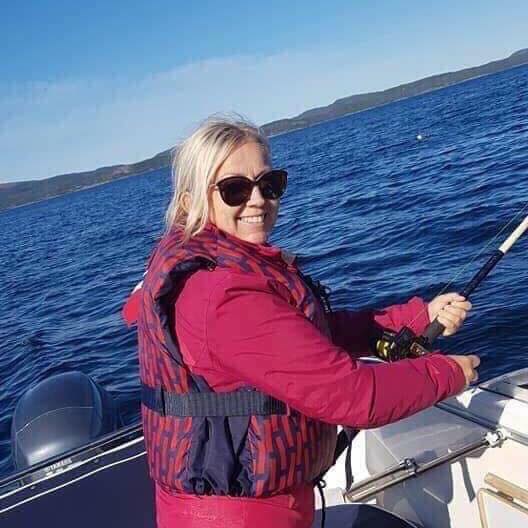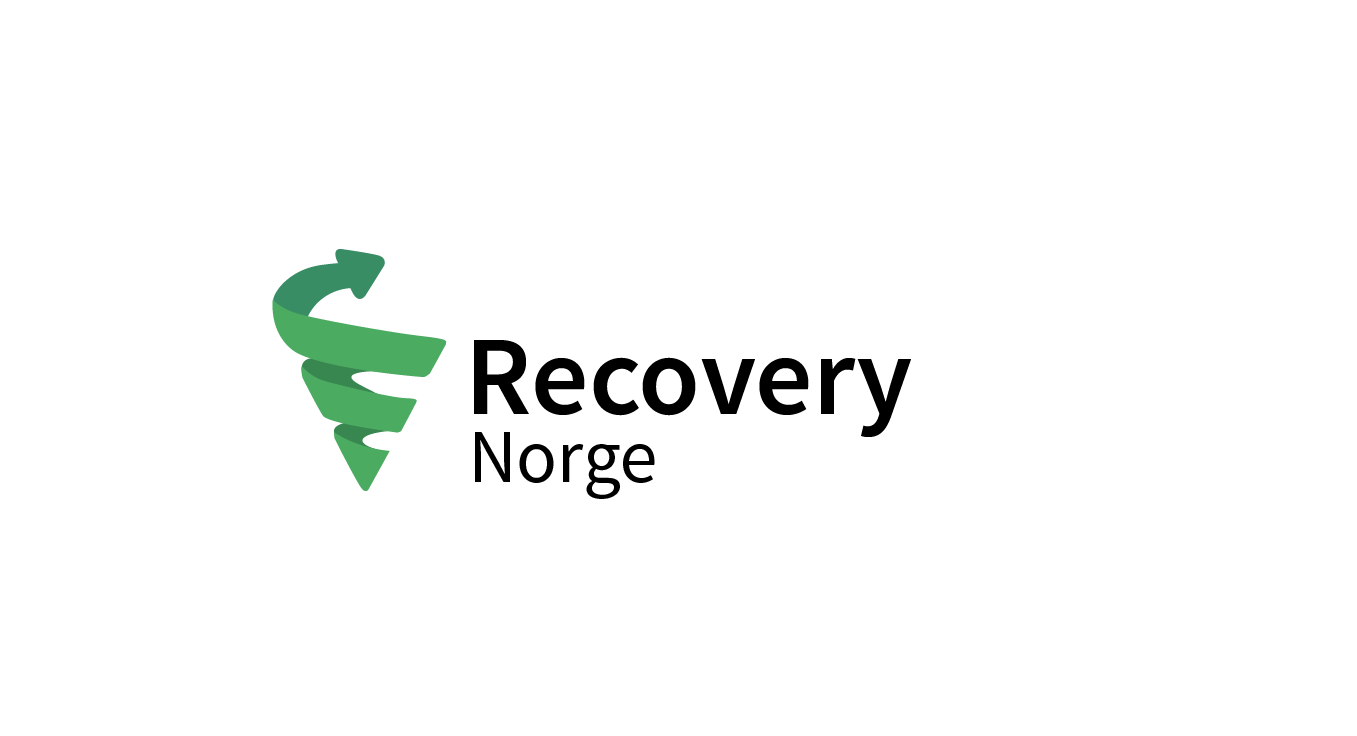Author: Aina Elisabeth Tandberg-Bråthen
First a little bit about myself: I was 49 years old when the illness struck me. For the past 25 years, I have been working in the banking and insurance sector. I have grown-up children and one grandchild. I’ve always exercised. I used to run 10 km 2-3 times a week, and I used to cycle quite a lot. I was a very active person, so, for me, going from running several times a week to barely being able to walk to the post box, was a big change. It was like having to go through a grief process. Thinking back, I guess my aim was always to be able to run again.
The total collapse
I’m not sure when it all started, but I’ve set the date of my total collapse to 15 November 2013. By then, I’d already had the “flu” seven times that winter. I was feeling cold all the time. I had a headache, my body was aching, and I was sensitive to light and noise. I had stocked up on vitamins and minerals, which I was sure I was lacking. In addition, I had an upset stomach. The last few years had been hectic due to my family situation and a busy work schedule. I believe I had been pushing myself too hard for too long.
On this November morning, my husband and I were sitting at the kitchen table, drinking coffee, before heading off to work. He was talking to me. I felt he was hovering over me while he was talking – I got a prickly feeling in my face and arms – like I was about to faint. I ran outside to get some fresh air and asked him to take me to the doctor’s. The GP referred me to the hospital with a potential TIA (transient ischemic attack) diagnosis.
All I could do was sit in a chair
I was in hospital for three days, for further medical examinations. During the three days in hospital, I lay in bed, staring at the wall. An occupational therapist (I think that’s what she was) came to see me. She asked me to do a clock test. The test is a screening tool for cognitive impairment, and I was asked to set the clock to 10 to 5. I could not do it – I was too tired to think. I was sent home. My medical tests showed no measurable results and I was told to contact my GP on Monday.
I was terrified of dying as my body was not working.
My GP put me on sick leave for 14 days, believing that by then I would be up and running again. However, this did not happen, and he had no idea of what I should do next. I was terrified of dying as my body was not working. It was twitching and trembling. I had no strength whatsoever. I had high levels of lactic acid in my body, my pulse was up, and my head was spinning and I was feeling giddy. I was also sensitive to light and noise. I only had the energy to focus on myself. All I could do was sit in my chair.
A fantastic psychologist
At the beginning of 2014, I contacted a psychologist in Oslo as part of my health insurance scheme. I met a fantastic psychologist called Carina Poulsen – and she became one of my guardian angels. We had some good conversations where she taught me about cognitive therapy and mindfulness. She drew some diagrams on a board showing me what happens to your body when it collapses; how your brain interprets signals and transmits these to your body, giving symptoms such as fatigue, headache, giddiness, dizziness and trembling. She told me how this is a normal way for the body to react to stress/exhaustion. It made sense.
After a while, we prepared a schedule. It involved me getting up and going to bed at the same time every day – there were 30-60-minute breaks throughout the day where I would listen to mindfulness music while sitting quietly in a chair breathing to calm my body. I also had to go for a walk every morning. The first week I managed to walk to the post box (70 meters). I cried because that was as far as I could walk. But all the time Carina told me it was good enough. Gradually, I increased the distance, to 200 metres, then an hour. This was over a period of 2-3 years. Each day, I had to do one activity, such as putting on the washing machine, or hanging up the laundry (many times I had to wash everything again, as I’d forgotten all about it). Other examples could be to visit my mum, go shopping or have a friend over – but the key was to just do one thing each day. Every evening I had to write down three things that I was grateful for. I also had to start using my senses. I had to really see the flowers outside, hear the birds chirp, taste the toothpaste I was using, or feel how nice it was to put on a face cream.
Seeing the ME specialist
About a year after my collapse, I also went to see the physician and ME specialist Dr Paul Kavli, who confirmed that I had ME/CFE. He also believed that the reason I was “relatively well” was that I’d done everything by the book. After such “excess” I had to rest for a week. The frustrating thing about ME/CFS is that if you do go to see a specialist or visit a friend, you have to rest for a week or two afterwards, which in turn makes you scared of moving about.
“Of course you will recover!”
After 20 sessions with Carina, the psychologist, I signed up for a mindfulness course in my hometown. At the course, I met two other fantastic people. One was an 83-year-old psychomotor physiotherapist and the other the course leader, who was a psychologist. When I came into the office, the old lady hugged me and said: “My dear girl – of course we’ll get you well!” At that time, I shed some tears of relief. I cried because at last there was someone who believed I would recover.
When I went to see my GP, he just shrugged and had no idea of what to do next – he was more concerned with getting me back to work before NAV started pushing me. I continued my sessions with “the old lady” for nearly two years. She hugged me and stroked me. In between, I continued to increase my daily walks.
Having been on and off the labour market for some years, NAV gave me a 6-months’ break, before they would start assessing my ability to work. The break started in May 2018.
Tricking my body
My aim was always to recover and be able to run again. I had tried to run a few times but had ended up in bed for 1-2 weeks afterwards – completely exhausted. It was like my body was misreading the signals after I’d been jogging. It interpreted it to mean that I was exhausted again and consequently by body developed all the symptoms. I decided the best way was to start gradually. I would jog for one minute, then walk for five. Then, I increased it to jogging for two minutes and walking for two minutes. I tricked my body into believing I would get well. I used the techniques I had learnt from my psychologist. I was grateful for what I had achieved – even if it was just 5X1 minute – and when the symptoms kicked in I talked out loud to myself, explaining to myself that my body reacted this way because I had jogged, and that that was ok. I thanked my body for looking after me. It was a slow process, but I did get a sense of achievement.
Recovery
At home, I said nothing because they were scared I would fall ill again. I almost don’t dare to say it out loud – but today I am well. I am working full time – I walk for an hour twice a week and I can jog for 30 minutes without falling ill/becoming exhausted for days afterwards. This winter, I have not had the flu or a bad cold. I take my precautions. I have a cleaner once a week – which means I can relax and rest after work. It’s been a challenge to find the right balance between activity and rest. I still have some days when I feel my body shaking a bit – but then I lie down, and I breathe slowly in and out – like my psychologist taught me.

I wanted to tell my story because I believe there are many people out there who are afraid of pushing themselves, because they end up in bed for a week or two afterwards. I think that by starting very gradually – walking for only three minutes – and telling oneself that it’s ok to have symptoms afterwards – and that symptoms are just symptoms – it is possible to get your life back.
